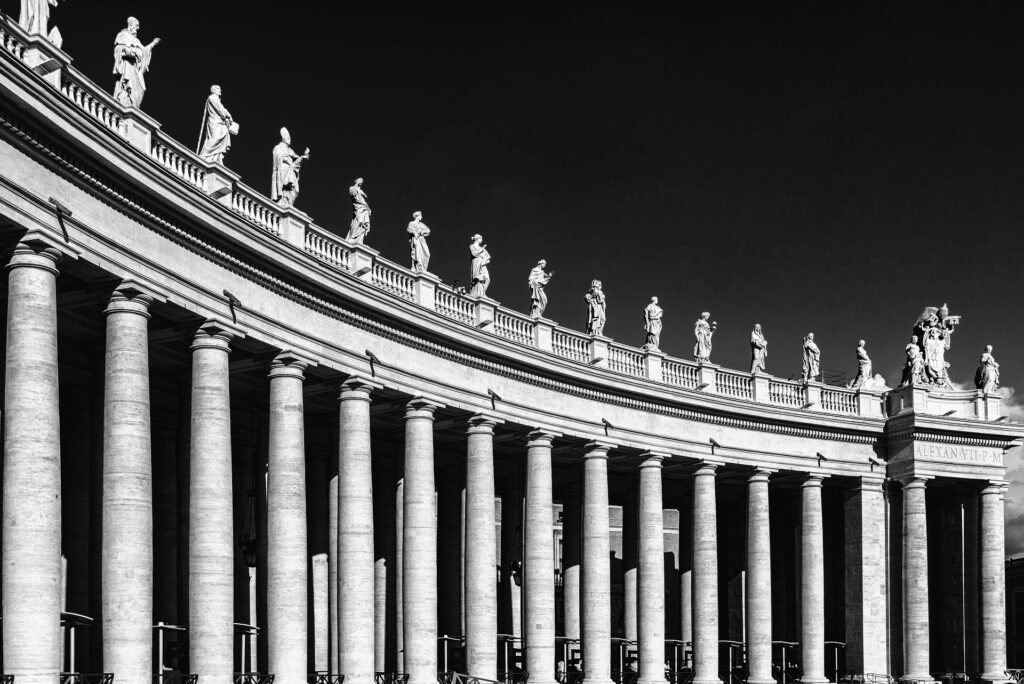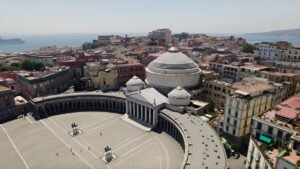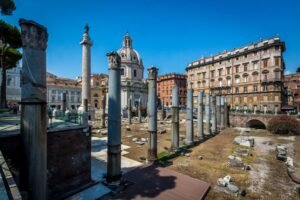Things To Do in Rome, Italy | Discover the top picks

Rome is like no place on earth, and it’s kind of mind-boggling when you think about it. This 3,000-year-old city was once the capital of the world’s greatest empire, and now it’s home to a world wonder, Michelangelo masterpieces, breathtaking ancient buildings, and the most delicious cuisine on earth. and don’t forget—the Pope lives down the street in the smallest country in the world, so you better be on your best behavior! Best things to do in rome.
Rome is an incredible destination due to its long history and the fact that there are tons of things to do in the Eternal City. This list features the best things to do in Rome, ranked in order of importance: everything from museums to visit, restaurants to eat at, tours to take, and general activities to enjoy, even down to what to eat.
Sadly, lots of people say Rome is overrated and overcrowded, but they just didn’t do it right. That’s why we’re going to give you the ultimate tips and hole-in-the-wall blog to make your stay unforgettable.
Rome, like any cultural capital, is best experienced through the eyes of a local guide. Check out our small group and private tours of Rome attractions and museums like the Colosseum, Vatican, Roman Catacombs, Borghese Gallery, and even food tours. There are a variety of options at different price points to accommodate all of our guests. We secure the most exclusive tickets so you can have the best experience possible.
As you may already know, Rome was built on seven hills. That said, today the city has expanded beyond its original boundaries, and you’ll find many opportunities to see the skyline from above. My favorite is Il Pincio, which is part of Villa Borghese. Here are some others:
Row Boats in Villa Borghese
Villa Borghese was once the literal residence of Cardinal Scipione Borghese. He developed it into a sort of secret garden, with peacocks and exotic animals running around.
The Lake of Villa Borghese. It’s a tiny little lake where you can rent rowboats. It’s really cool, and there’s a temple in the background. It’s just a cool situation, so definitely do it if you have some time. It’s great for families and kids!
For more great reads and things to do in Villa Borghese, definitely visit our blog. We have a dedicated page just on things to do there.
Palazzo Altemps
Located next to Piazza Navona in Piazza di Sant’Apollinare, number 46, the entrance costs seven euros. Sometimes there’s an additional fee for a special exhibit, which is usually about three euros extra. So, you’re probably getting in for less than 10 euros.
It’s true that most Rome experts won’t rank this museum very high on their lists, but I like it. I enjoy visiting this museum because it’s almost always practically empty, and it’s absolutely beautiful.
The first thing you’ll want to see there is the Galata Ludovisi, which in English is the Ludovisi Gaul, also known as the Dying Gaul or the Galatian Suicide. The Suicidal Gaul is my favorite ancient statue in Rome. The story behind it is extremely romantic in a twisted way—you’ll have to read more about it in our blog.
The second must-see inside this museum is the Ludovisi Battle Sarcophagus. It’s absolutely breathtaking—a massive cluster of figures carved on top of a sarcophagus. Words really can’t describe it.
Like many museums in Rome, this one features a private collection that was eventually handed over to the state. This normally happens when someone decides to gift their collection to the state, or when there are no heirs to pass it down to. You won’t find a Sistine Chapel-type fresco here, but it’s still an amazing gallery and museum.
It’s the kind of place you can just pop into—it only costs seven to ten euros, and you can have an excellent time. You’ll undoubtedly benefit from taking a tour of this museum, but you can also make a list of things to see and do some research on your phone.
Eat Gnocchi con Sugo di Carne
One of the most wonderful and beautiful things about Rome—and Italy as a whole—is the tradition. It’s my favorite thing about the country: all the traditions they have. Imagine there were rules for almost everything you eat and drink, but they were wonderful rules—rules that everyone loved and adored. Even travelers, when they visit, are like, “Oh my god, these rules are so crazy!”
But the rules are stories. The rules are based on tradition and culture. That’s how Rome works. Gnocchi are no different—they’re only served on Thursdays at traditional Roman trattorias. Why? Gnocchi, prepared from potatoes and other heavy ingredients, are incredibly filling.
A big plate of gnocchi con sugo di carne—a tomato meat sauce—is more than enough to satisfy your hunger. You can probably get a plate of gnocchi at a traditional tablecloth trattoria or even a pizza place that serves daily specials for about five euros.
Alternatively, you might find it served on a paper plate or as a to-go meal, and it’s just amazing—so delicious, you’re going to scarf it down. But wait, hold on a second—I’m getting ahead of myself. Why only on Thursday?
In Rome, Friday was traditionally a day to eat fish. This tradition stems from the prohibition of meat on Fridays as a form of penance for the day of Christ’s death—not just during Lent, but all year round. Fish can be delicious, but it’s often light and digests quickly.
Romans figured they’d eat gnocchi on Thursday to fill up in preparation for Friday’s lighter meal. Then, on Saturday, they’d enjoy la trippa (tripe), another hearty dish, to balance the scales since it’s also a heavier meal. Regardless, if you want to embrace tradition in the best way, order gnocchi con sugo di carne on Thursday while in Rome. If you’re not there on Thursday, you’ll just have to miss out.
Piazza Navona
Piazza Navona is a truly unique piazza and a must-visit site while in Rome. I mean, you literally can’t miss it! It’s completely pedestrian-friendly and lined with restaurants and cafes. You can stroll through on foot and admire its three fountains, including the famed central Fontana dei Quattro Fiumi (Fountain of the Four Rivers) by Gian Lorenzo Bernini.
Bernini’s fountain is beautifully framed by the breathtaking Church of Saint Agnes in Agone, which was designed by a father-and-son team with the last name Rainaldi, along with Francesco Borromini.
There are popular tales about the relationship between Borromini’s church and Bernini’s fountain, undoubtedly born from the bitter rivalry between the two figures. Let me explain: at one point, Borromini was working on Palazzo Barberini, a separate project. He was working under another gentleman who, unfortunately, passed away.
So, you would think Borromini would be selected next to design the palazzo. But no—Bernini was brought in over Borromini to finish the commission. Naturally, Borromini was very angry about this, and that’s where their rivalry originated.
The story goes that Bernini’s statue representing the Nile River is holding its hand out toward the church, as if bracing for its fall due to incompetence. However, this is very unlikely to have been a hidden meaning, considering the fountain was built years before the church was even started. But who knows? Maybe Bernini was a visionary and placed it there anyway.
Join a Food Tour
Food tours are all the rage in Europe, and for good reason—they’re the best way to sample a variety of local dishes. We entered the food tour scene in 2024 and have since focused much of our efforts on ever-changing and evolving neighborhoods and restaurants.
Our food tour starts in Campo de’ Fiori and migrates across the Ponte Sisto into Trastevere. Trastevere is the perfect mix of old-world charm and modern culinary innovation, making it a must-visit neighborhood for food lovers of walking and eating.
You visit many stops—sometimes as many as six, sometimes as few as four—and eat and drink along the way. Doing a food tour is a must for anyone visiting Rome, Florence, or Venice. Check out our Trastevere Locals Food Tour in Rome, and be sure to explore our other food tours across Europe.
Yes, you’ll eat a ton of food, and yes, you’ll drink a ton of wine if you want to. If you don’t, no problem—it’s there waiting for you if you change your mind.
Check Out the Capitoline Museum
The Capitoline Museum, or Musei Capitolini, is definitely the full package. The theme of the museum is ancient history, which is fitting since it sits on the edge of the Roman Forum and offers one of the best views of the downtown ancient city.
The Capitoline Museum is actually a complex of three buildings: Palazzo Senatorio, Palazzo dei Conservatori, and Palazzo Nuovo. All these buildings were either designed or redesigned by Michelangelo, who had a massive influence on the exterior appeal of the museum complex and the entire area.
Michelangelo is responsible for the layout of these museums, located in Piazza del Campidoglio, and for the staircase leading up to the museum, known as La Cordonata. Now, you might think, “Who cares about a staircase?” But this one was specifically designed to allow horses and carriages to ascend smoothly.
Admission costs 11.50 euros, plus an exhibition fee if applicable, which can range from three to five euros.
Eat La Amatriciana
This should probably rank higher on the list because Amatriciana is one of the quintessential dishes of Rome. But hey, that’s how it goes! Like any good rivalry, Rome is divided between two factions: Amatriciana and Carbonara. It’s almost like Roma and Lazio, the football teams—except it’s a battle of pasta plates. Both dishes are absolutely delicious, and it’s impossible to definitively say which one is better.
I can’t pick sides, but I do tend to make Amatriciana more often, so it’s probably my number one favorite dish in Rome. Like many of the best Italian dishes, this Roman favorite is made with simple ingredients. It’s often cooked at home with little grape tomatoes, quickly sautéed into a light tomato sauce.
Pancetta is chopped up and added, along with pecorino cheese, chili peppers, and a few other ingredients. It’s a simple yet incredibly flavorful dish. You definitely need to look up a recipe, but don’t just search for an Amatriciana recipe in English. Instead, look up the Italian word for recipe, ricetta, followed by Amatriciana, and find an Italian blog post describing how to make it.
Then, translate that post into English. That’s the only way to get the true, authentic version. Otherwise, you might end up with these strange, wacky English versions of Amatriciana, and that’s no good. Now, there’s yet another rivalry among Amatriciana purists: should it be made with spaghetti or bucatini? Bucatini is arguably the original choice, and I kind of prefer it myself.
But in Rome, you could have it with spaghetti, maniche corte (short sleeves), or bucatini. It’s all just different types of pasta. However, unlike what you often see in the States or other Western countries, the type of pasta you use with a particular sauce is extremely important. You can’t just throw any pasta with any sauce.
Anyway, Amatriciana is 100% a must-try dish. My recommendation is: if you can, try making it at home. But if not, just eat it in Rome.
Visit the Orange Groves and the Keyhole
This is one of those magical, hidden gems in Rome that is an absolute treat. You can also find this in our “Free Things to Do in Rome”
The park, which is quite small at 24,000 square feet (or about 7,800 meters), sits on top of Rome’s famed Aventine Hill and is just a few steps away from the famous keyhole in Rome. So, you’ll need to make your way up to Aventine Hill, which can be a bit tricky, though there are buses and other transportation options available.
The easiest way to get there is by taking a taxi or joining a tour. Once you reach the Orange Grove, enjoy the amazing view, and then you can walk (or skip or hop!) over to the Keyhole. The Keyhole is a truly unique experience.
The Orange Grove park was designed in 1932 and is attached to the Basilica of Santa Sabina, which is a stunning, ancient basilica worth checking out. It’s a very peaceful viewpoint, and you won’t find many visitors there. As I mentioned earlier, you’ll need to arrange some kind of transportation—whether it’s a bike or a taxi to the top—but it’s definitely worth it.
Now, don’t forget to visit the Keyhole as well. I’m not going to spoil the surprise and tell you what’s behind it—that’s part of the allure. So, definitely don’t look it up on the internet. Just go to Rome and see it for yourself—that’s the best way to do it.
Walk Across Tiber Island
Tiber Island is an amazing, modern-day site. Two bridges connect either bank of Rome to this small island, which is home to one of Rome’s primary hospitals. Locals say that if you’re not born on Tiber Island, you’re not truly Roman. In fact, it’s quite common for locals to end arguments by saying, “I was born on Tiber Island, so I know more about Rome.” It’s almost like a credibility card—people even put it on their resumes, it’s that important.
While I’m not sure if this is entirely accurate, legend has it that the body of Rome’s last king before the Republic, Tarquinius Superbus, was thrown into the Tiber River in 510 BC. Over time, sediment builds up around him to form the island. It’s almost certainly not true, but hey, I love a good legend, so let’s go with it.
In the summer, you’ll find bars open on the Tiber, and even a mini movie theater. It’s one of my favorite places to relax, have a drink with friends or loved ones, especially on a hot summer day, since the river cools things down a bit. I can’t wait to take my kids back here after all this crazy pandemic stuff is behind us.
The Mouth of Truth
In Italian, the Mouth of Truth is called Bocca della Verità, which literally translates to “Mouth of Truth.” The disc is well over 2,000 years old, and it has a hole in the center, which represents the mouth. The first home of this artifact was most likely the Temple of Hercules.
Literally just across the street from where it is today, it was probably a drain cover for runoff water. Now, it exists in the Santa Maria in Cosmedin Church, which is directly across the street from the Temple of Hercules. The figure on the front of the disc is Oceanus, and it weighs about 3,000 pounds (1,300 kilograms)—that’s massive! Oceanus was a sea titan god.
Today, visitors pay two euros to put their hand in the Mouth of Truth and take a picture. There’s usually quite a bit of a queue, but it lasts only for a few moments. It’s more intimidating than anything else. The legend is that if you put your hand in the Mouth of Truth and tell a lie, your hand will be bitten off.
This legend was immortalized in the 1953 film Roman Holiday, where Gregory Peck and Audrey Hepburn’s characters visited the site. Gregory Peck put his hand in, pulled it out, and secretly tucked it into his sleeve to make it look like it was bitten off. Audrey Hepburn pretended to be surprised.
While you’re there, definitely check out the Santa Maria in Cosmedin Church. The word “Cosmedin” comes from the Greek word meaning “pure,” and inside the church, you’ll find the important Christian relic—the skull of Saint Valentine. Also, look at the floors—these are called Cosmedin floors, made by the Cosmedin brothers.
When you visit the Sistine Chapel, take a look at the floors there, too. They are exactly the same as the ones in Santa Maria in Cosmedin. The Cosmedin brothers were famous for creating floors in Rome, so you’ll see their work all over the city.
Trajan’s Column
Trajan’s Column is an incredible monument and a surviving piece of propaganda from the 2nd century AD. The column has an incredible history and plays a very important role in piecing together ancient Roman timelines. The column was built in approximately 113 AD to honor Emperor Trajan’s first conquest in Dacia (modern-day Romania). It is located in Trajan’s Forum, also dedicated to the late emperor, and stands 114 feet (35 meters) tall.
The column is wrapped with a helical frieze that winds 23 times around the column and features 2,662 figures telling 155 stories or scenes. While it may seem like a big deal to have such a large column survive this long, the real intrigue comes from the fact that the column is hollowed out in the center, and there’s a staircase winding all the way to the top. At the top today, you’ll find a statue of St. Peter.
The figure of Trajan sat on top of the column until it was removed by the church and replaced with Saint Peter. The symbolism goes further: Trajan’s Forum is home to Trajan’s Market, a multi-level marketplace that even featured luxury apartments in the center of Rome. Yep, Romans wanted the same material things we do! Before the market was built, there was a massive hill there—how high? You guessed it—114 feet tall! Trajan built a massive phallic symbol the size of the hill, which he moved with him on top. Amazing how things never change.
Shop Near the Spanish Steps
The Spanish Steps and Piazza di Spagna are synonymous with high-end shopping due to the high concentration of luxury stores nearby. Italy’s most famous shopping street, Via Condotti, is directly opposite the Spanish Steps in Piazza di Spagna.
The Italian name for these steps is La Scalinata di Trinità dei Monti. So why are they called the Spanish Steps? The Spanish Embassy is located about 100 meters south of the steps, and the square is called Piazza di Spagna.
Head Down to Pompeii on the Amalfi Coast
Okay, so leaving Rome isn’t technically something to do in Rome, but if you’re there for an extended stay, people often ask how many days they should spend in Rome. You’ll want to spend five or six days in Rome easily, and four days should be the absolute minimum, as there’s so much to see. It’s also a great jumping-off point for nearby attractions.
Getting to Pompeii from Rome takes about 2.5 hours by car and 3.5 hours by train, making it an accessible day trip from the city. If you take the train, you’ll spend approximately 65 euros round trip on tickets, plus transportation to and from the train stations. Admission to Pompeii itself will cost about 10 euros, so you’re looking at around 75 euros per person.
You’ll walk into Pompeii and explore a city that’s literally frozen in time, but almost nothing is labeled for tourists. For as low as 145 euros per person, you can join a Pompeii day trip from Rome that includes a stop in Sorrento (which is part of the Amalfi Coast).
This trip includes transportation to and from Pompeii, a two-hour guided tour with a Pompeii archaeologist, and a stop in Sorrento. Everything is done by bus or coach, and there’s an attendant the entire time. I highly recommend visiting Pompeii while in Rome, and our day trip is a great value.
Throw Some Coins in the Trevi Fountain
As if you haven’t spent enough money in Rome already, now you’re encouraged to throw three coins into the Trevi Fountain. But don’t worry—throwing coins of any size is perfectly fine, as long as you make sure they fall into the fountain! The Trevi Fountain is one of the world’s most magnificent fountains, located in the heart of Rome, Italy.
It’s completely free to visit since it’s outdoors and open all the time. The enormous masterpiece sits on the back of Palazzo Poli, right in the center of the city. By the way, palazzo means “palace,” and Poli refers to the family who owned it.
Originally, the famous Gian Lorenzo Bernini was going to design the fountain in the 17th century, but nothing ever came of it. A hundred years later, a man named Nicola Salvi was selected to design it after winning a competition, though he was technically the runner-up.
The competition was between Salvi and a Florentine named Alessandro Galli. Galli won the initial contest, but Romans weren’t thrilled about a Florentine getting the commission. Eventually, Salvi was given the job, and the fountain became one of the most iconic in the world.
The job was taken out of fear of the mob, so he got the job even though he lost. Construction began in 1732 and was completed in 1762, 11 years after Salvi’s death. The job was handed to an architect named Giuseppe Panini, who worked with multiple sculptors to finish the project. Yes, his last name means sandwiches—pretty cool! He probably didn’t invent them, though. The fountain’s facade tells a gripping story of its history.
Jewish artichoke
Try a Jewish artichoke in the Jewish ghetto. Carciofi alla giudia translates to “Jewish artichokes.” Artichokes thrive in Rome’s climate, so they are very popular in the city, with two main recipes: alla giudia, the Jewish way to cook them, and alla romana, the Roman way. Don’t worry, you’re allowed to prefer one over the other without fear of reprisal, but the Jewish ones are almost always chosen as the winner. Why? They’re fried.
Jewish artichokes are seasoned with salt and pepper, then fried twice in olive oil. Yes, twice. This is how they get super crispy. In Italian, you say crocante. They are also fried in high-quality olive oil—not like palm oil or peanut oil. Different oils have different boiling points, so there really aren’t Jewish artichokes unless they’re fried in olive oil twice.
They are often served cold but cooked for up to 30 minutes. They’re seasoned with lemon, mint, garlic, olive oil, and black pepper. This may sound a bit eccentric and possibly politically incorrect, but I would stick to religion on this one. If the restaurant is run by Catholics, I would order Roman-style artichokes. If it is Jewish-run, I would order Jewish-style artichokes without question.
How do you know who runs the restaurant without asking an awkward question? Well, the Jewish ghetto is still mostly occupied by Jewish-run restaurants, so if you’re in the Jewish ghetto, order Jewish artichokes. If you’re outside the Jewish ghetto, order Roman-style artichokes.
The Catacombs of Domitilla: Ancient Romans were pagans. Okay, pagans worshipped many gods, and during different periods, there were different customs. But burial was rarely used in Roman times; pagans burned their dead, mostly for sanitary reasons. Christians were more of a crazy cult at the time, in the second century, and pagans thought it was so silly that they wanted to bury people.
They didn’t think much of it and told them that if they wanted to do it, it’s fine; they just had to do it outside the city walls. This way, we don’t have a plague running around or anything like that. That is how the catacombs came to be used from the second century onwards.
Yes, you can visit the catacombs in Rome almost any month of the year. You can visit by yourself or with a tour of the catacombs. Tours make it a little bit easier because they get you to and from the catacombs, as well as to other points of interest like the Appian Way and the Capuchin Bone Crypts.
The exclusive Vatican Gardens
Visit the exclusive Vatican Gardens. Now, this is a super cool experience that is very exclusive. The Vatican Gardens are a beautiful and well-manicured set of gardens and fountains inside Vatican City. You’d never know you were in the bustling city of Rome or the crowd of the Vatican Museums.
Getting into these gardens is more difficult than you think. Luckily, we offer tours and other ways to visit them. It’s a 57-acre complex, complete with its own train station.
The tour actually takes you from the Vatican Gardens to Castel Gandolfo. It’s awesome! Definitely click the link and check it out if you want to visit the Vatican Gardens and Castel Gandolfo.
Pantheon
The Pantheon. The Pantheon was one of Rome’s greatest structures and the best-preserved structure from antiquity. With that argument, if anyone’s argued with me, go ahead—the Pantheon is where it’s at. The building survives today as a Roman Catholic church, Santa Maria ad Martyres, but was originally a pagan temple.
The name “Pantheon” possibly translates to “of all gods,” but there’s a lot of speculation around whether or not all gods were worshipped there. Construction began at the beginning of the second century A.D. under the rule of Emperor Hadrian and was inaugurated about 10 years later.
The facade reads, “Marcus Agrippa, son of Lucius, built this in his third term as consul.” Marcus Agrippa did, in fact, build the original structure, but it was like comparing a barn to the Eiffel Tower.
The original structure, commissioned by Marcus Agrippa, burned down twice due to its wood construction. Hadrian commissioned the current structure out of stone, which is why it passed the test of time.
While it is unknown who the original architect was, it is commonly believed that the only architect talented enough to construct the interior dome, which is amazing, would have been Apollodorus of Damascus. It’s pretty awesome. Do not come to Rome and miss the Pantheon!
The Borghese Gallery
Visit the Borghese Gallery. The Borghese Gallery is a small, unassuming museum that is Rome’s most enjoyable museum, in my humble opinion, for a few reasons.
Now, it costs a little bit to get inside—15 euros, which can fluctuate based on the exhibitions going on—but it is an incredible experience. First, they limit the number of visitors, not just during a pandemic but at all times, to 360 visitors.
they limit the time you can stay inside to two hours, which is the perfect amount of time to visit the gallery. Lastly, and definitely not least, they have arguably one of the greatest collections of Baroque artwork per square foot on earth. The Borghese Gallery is home to at least 10 high-profile works by Gian Lorenzo Bernini himself. You will also find paintings by masters such as Caravaggio, Raphael, Peter Paul Rubens, and more.
The Borghese Gallery is my absolute favorite tour to lead because I really enjoy a good story or fable. Baroque artwork itself is passionate, and you can see that in the sharp movements. Also, each painting or sculpture tells a story, and like I said, I like a good story.
Priced for a private experience, just your group and the guide, this will make the highlight of your art experience in Rome.
The Colosseum
Explore the Colosseum undergrounds. The Colosseum is a modern-day symbol of Rome and one of the most sought-after attractions in the world. It is an utterly incredible monument that is still standing almost 2,000 years after construction.
The city of Rome takes great pride in the Colosseum, and that shows in how much access is available to restricted areas. General admission to the Colosseum may get you past the line, but you’ll only be able to access the first and second levels, not including the arena floor.
We have tours and experiences that visit the underground tunnels below the Colosseum, which were used by gladiators and showmen of sorts. There are a variety of tours that visit different areas of the Colosseum and include restricted access to the undergrounds.
The Vatican
Visit the Vatican before it opens. The Vatican Museums are a bucket list item for Rome and the world. It is an amazing collection of Renaissance art, culminating in Michelangelo’s Sistine Chapel. Actually, it culminates with the larger-than-life St. Peter’s Basilica, which means the Sistine Chapel is just a stop on the way to the Basilica.
Yes, it is incredible that one of the world’s most sought-after works of art is just a stop on the way to the world’s greatest church. Limited during COVID, it will ultimately fill back up once things normalize. We highly recommend joining our Privileged Entrance Vatican Tour or our Pre-Opening Vatican Tour, which enter the Vatican Museums 60 and 90 minutes early, respectively. You can see our full list of Vatican tours below and compare.
Thank you, and that wraps up our 12 best places to travel in italy. Do you agree with the places we chose, or is there somewhere you visited that you feel should be on the list? leave us a comment.
You can find me on Instagram: @dreamytravelersofficial/.









One Response